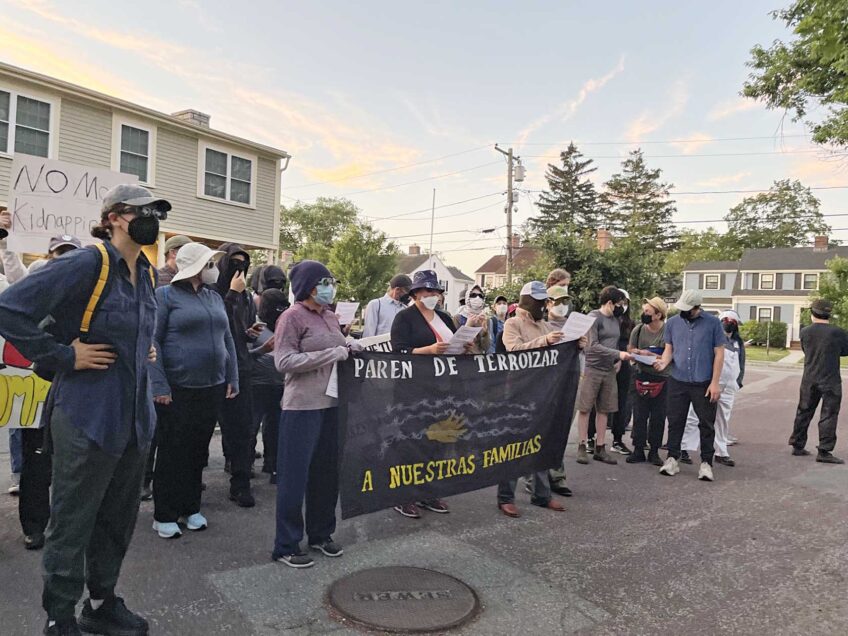Earth’s oldest living social compact, the Massachusetts Constitution, calls us to cherish the public schools. For state politicians, providing adequate public education is an unavoidable duty. Only voters can render judgment.
For over a decade, achievement gaps in Massachusetts worsened. After the pandemic, the gap widened again. English language learners and students with disabilities, no longer catching up to their peers, are falling behind year after year.
Deliberations on Beacon Hill delivered only one major revamp of education funding since 1993: the Student Opportunity Act of 2019. The new money will be parceled out through the fiscal year that ends in 2027.
Those changes were recommended by a commission in 2015. By law, such a commission must be established “not less than every ten years.” But policymakers aren’t rushing into action anytime soon. Ten years, some say, might mean 2029.
Legislative incumbents can rest easy. Often unchallenged, their talking points — beneficence by the millions — are secure through the end of the decade anyways.
A task force could have commenced laying the factual groundwork for change years earlier. The state Senate’s budget contained enabling language this year. After negotiations with the House, lawmakers approved a budget that did not.
And though total school aid increases annually, especially of late, the Chapter 70 formula is failing to adapt. Delivering $6.9 billion in school aid this year by calculating each district’s minimum spending level — the foundation budget, the formula also determines how much each locality can afford.
Municipalities and the state have split responsibility for the foundation budget, 59% and 41% respectively, since 2007. But state income taxes grew 40% faster than municipal property values — the key local revenue source — since 2012.
The foundation budget, indexed to inflation, also lagged. In the 2007 formula, the foundation budget was 4.73% of Department of Revenue Income statewide, 4.62% in 2013 and 3.36% for 2025. Funding the school aid line item is progressively trivial. The difference is in the billions.
Fixed factors, like the 59-41 local-state split, are much to blame. Unchanged while the inputs fluctuated, the equation became unbalanced. Numerical constants, crafted by political compromise, are arbitrary.
Take, for instance, the target local share cap which was created in 2007. This year, 181 districts are capped, the most ever. Only 63 could afford the max share in 2007.
In tandem with the 59-41 local-state split, the cap also shifts the burden to those more dependent on state aid. Collectively, the municipalities owe 59%. So, a limit on what the wealthiest owe must be made up for elsewhere.
District-by-district, the 59% local responsibility is calculated using a wealth-and-income metric. Called combined effort yield, this metric balances statewide property wealth and income equally. But, as incomes grew faster, the formula inflated property wealth to equalize the inputs’ contribution.
Property taxes in the poorest cities shoulder plenty already. Many of the same districts that educate the most English language learners struggle to afford the state’s school spending minimum. Brockton, Chelsea, Everett, Fall River, Lawrence, Lowell, Revere and Springfield have seen their required local contribution rise faster than the state average since 2019.
Supposed to correct for inequitable regional economics, the funding formula only goes so far.
Frontrunners in wealth- and income-growth are gaining ground over and above the target local share cap. Boston and Cambridge, economic behemoths each, outpaced Massachusetts in both measures since 2007. Their property values grew over twice as fast as the state; and their household incomes grew about 60% faster.
Over the cap since its creation, Cambridge stands out even among the wealthiest places in Massachusetts. Last year, the home of Harvard received more than double its 2012 state aid. Since then, Cambridge built $13.7 billion in industrial property, an over five-fold increase. So strong are Cambridge’s finances that the city on the Charles slashed its industrial tax rate from 21.5% in 2013 to 10.5% in 2024 and its public schools still routinely outspent the state minimum twice over.
A further aspect of the formula favors Cambridge most of all: the wage adjustment factor. Increasing most of the foundation budget for expensive labor markets, the factor primarily applies in the Boston-Cambridge-Newton area. Cambridge has the highest multiplier: 112.7%. Only 10 school districts got the boost in other regions last year.
Benefiting big spenders like Carlisle, Dover, Rockport, Wellesley and Weston, the wage adjustment factor only aids the formula’s biggest beneficiaries in expensive regions, such as Chelsea, Everett and Revere. Eighty-eight municipalities had the factor applied last year, 67 of them were over the 82.5% cap on local share.
For districts that easily outspend the state minimum, such increases to their foundation budgets translate directly into state aid. Thirty-nine districts with the wage adjustment factor spent 50% over the threshold in 2023.
The most vivid symbol of excessive wealth accumulation is the relationship between the combined effort yield and foundation budget. The former divided by the latter is the key step in calculating target local share. Any district’s result over 82.5% is reduced to the cap. Statewide, the relationship is 85.1%. On average, Massachusetts is over the maximum.
The last decade exacerbated inequality especially. From 2007 to 2015, the ratio of combined effort yield to the foundation budget hovered around 70%, remaining reasonably under the cap. The number of capped districts was also relatively steady through 2017. Now, both numbers are at historic heights and the trend is steepening.
All of this coincides with reopening achievement gaps. English language learners and students with disabilities, conceivably, could benefit from an overhaul.
But change will have to wait. Elected officials are not expecting a Foundation Budget Review Commission for years. And the state’s district-by-district plans to intervene in achievement gaps are overdue.






